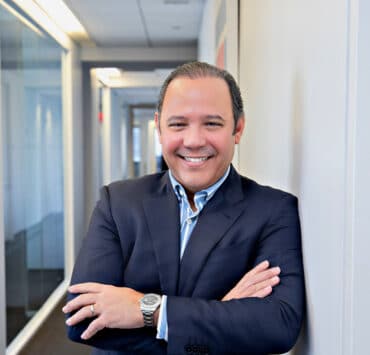|
Getting your Trinity Audio player ready...
|
In the digital age, the spread of misinformation poses a significant threat to democracy, especially within the Latino community where Spanish-language media is not as heavily monitored the way English media online.
“We are still in the dark when it comes to what is really happening with Spanish-language content, and how this is spreading among the Latino community—in and out of the United States,” says Frankie Miranda, president and CEO of Hispanic Federation. Hispanic Federation was founded in 1990 and is a nonprofit organization that seeks to promote and advance the rights and visibility of Latino audiences nationwide. As such, Miranda’s work centers around educating Latinos on their rights, organizing them to take action.
Post-2020 Efforts to Combat Misinformation
And yet, while Miranda’s concerns are valid, there is a significant increase in organizations working to combat the rise of misinformation, particularly among Spanish-speakers, since the 2020 presidential election. The Spanish Language Disinformation Coalition (SLDC) is made up of twenty partners, including heavy hitters like the NALEO Educational Fund, National Hispanic Media Coalition, and Latino Victory. In fact, SLDC rose up post-election in an effort to combat the troubling trend of misinformation and disinformation.
The 2023 Media Literacy Policy Report by Media Literacy Now—a nonpartisan nonprofit that “teaches students to apply critical thinking to media messages and to use media to create their own messages”—shows growing support for media literacy policy across the US.
Last year, California passed a comprehensive media literacy law to redirect priorities and funding to media literacy curriculum and professional development among educators, which began January 1, 2024. This matters because California has the largest K–12 school population in the country; it also has the largest Hispanic and Latino population (15.7 million, according to a 2023 Pew Research study).
Adapting Fact-Checking for the Digital Age
In short, combating misinformation requires a multilingual, multigenerational approach.
“Now , misinformation and disinformation is happening at a multiplatform level,” says Marta Planells, Telemundo Network’s senior director of digital news. “Four years ago, we used to produce fact-checking in just text. We would write an article, post it on our site, and share that link on social media. That was it. With the pandemic and the rise of TikTok, a lot has changed. Fact-checking happens for every type of storytelling style—from news to articles to short-form social media videos.”
Planells points to nonpartisan, nonprofit partnerships with Poynter for fact-checking and media literacy initiative MediaWise to better illustrate this work. Their Spanish-language news team is working behind the scenes to ensure they deliver news that’s been thoroughly vetted.
“We were the first Spanish outlet to be certified by the International Fact-Checking Network, and it was very important for us,” Planells says. “And we’ve been working with other partners in the fact-checking business to not only produce fact-checking content, but also to start producing media literacy content.”
Connecting Policy Awareness to Voter Turnout
States that Media Literacy Now classify as taking “significant steps toward comprehensive media literacy education through the legislative process” include California, Texas, and Florida. More than half (55 percent) of the US Hispanic population resides in those three states.
Getting people to understand these kinds of policies and their benefits them is crucial to getting people to the polls, Miranda stresses.
“We are working to ensure that people understand that communities that have high incidence of voting are communities that have better schools, better hospitals, and better resources,” Miranda says—a point backed by CCI Health Services. “We are emphasizing the importance of our numbers, emphasizing the importance of our vote, but also reminding people that most of the elections that decide the fate of our daily lives are those local elections.”
The Way Forward
Combating misinformation in the digital age requires a multifaceted approach that addresses the unique challenges faced by Latino communities. Organizations like Hispanic Federation, SLDC, and Media Literacy Now are leading the charge in promoting media literacy, fact-checking, and policy awareness. However, their efforts must be supported by continued investment in education, partnerships with media outlets, and active engagement from the Latino community itself.
By empowering individuals with the tools to identify and counter misinformation, we can safeguard the integrity of our democratic processes and ensure that the voices of Latino voters are heard loud and clear.

